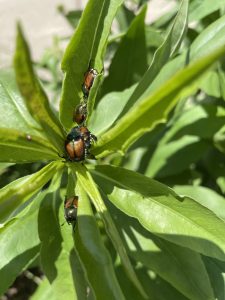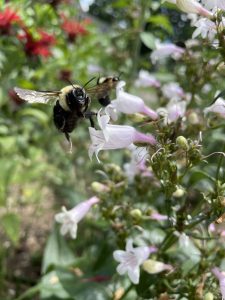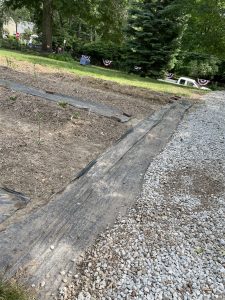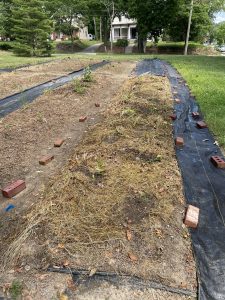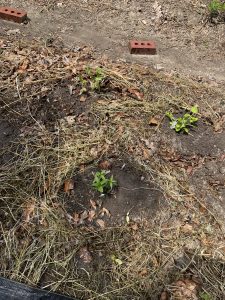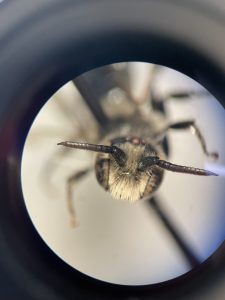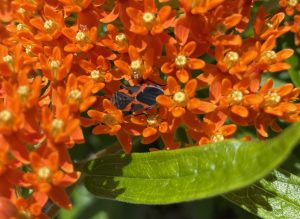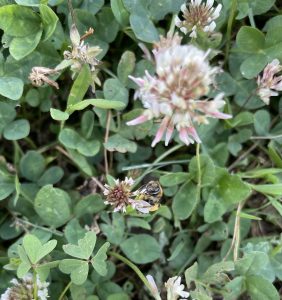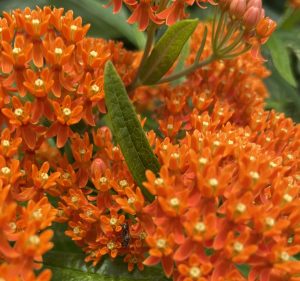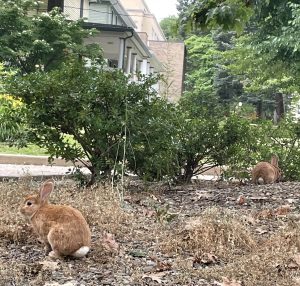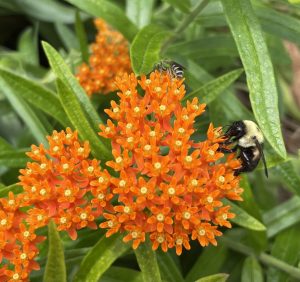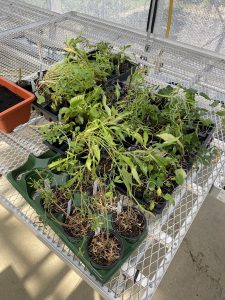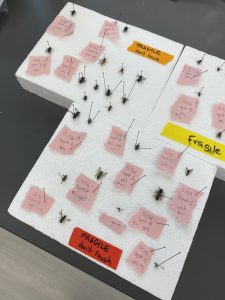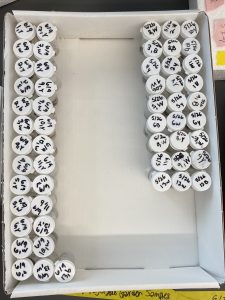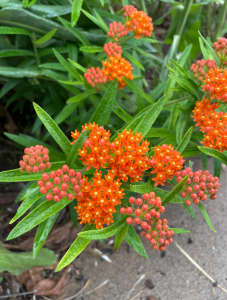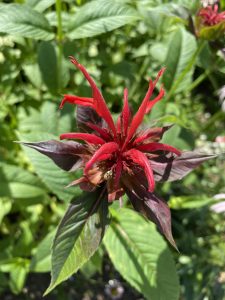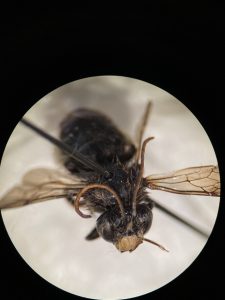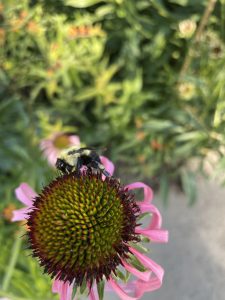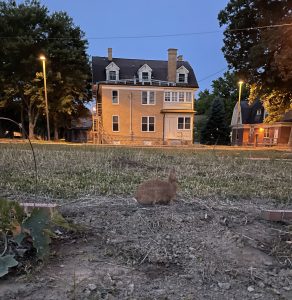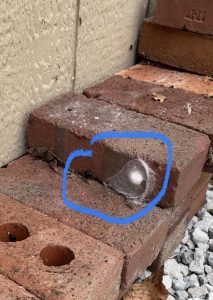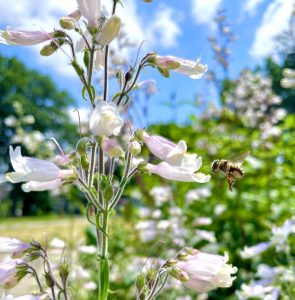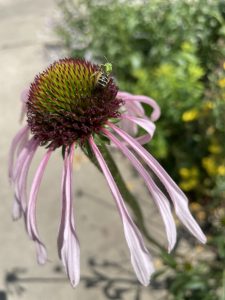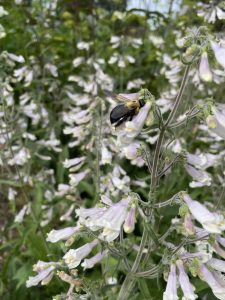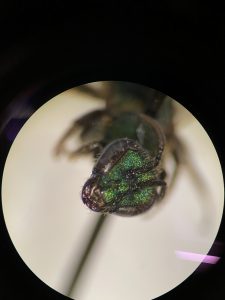winding down
Hey Pals, it’s great to have you back for another Pollinator Patch Blog Post! With only another month until fall 2021 semester begins, it’s time to share with you my last blog entry for the summer. These past few months have been quite the adventure and although I will be on hiatus, Emily and Uju will be around for another couple of weeks to keep you informed on all the exciting news going on in our Plots.
[Proceeding to the Patches]
Pine Patch
New Blooms
A couple new arrivals in the Pine Patch this week! In the middle of the aisle way we have one False Sunflower blooming, as well as the tall bamboo-like plants around the outskirts. With their bright yellow flowers they are hard to miss!
False Sunflowers
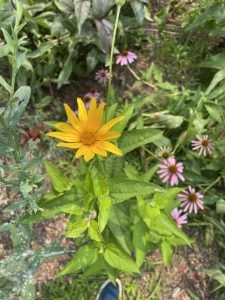
Heliopsis helianthoides
Tall Coreopsis
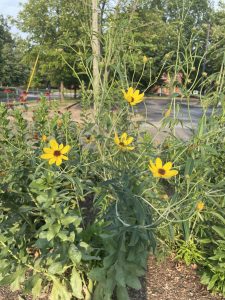
Coreopsis tripteris
Teamwork Makes the Dream Work
Since weeding remains an essential part of maintaining proper plant care, Emily, Uju, and I spent a couple hours this past week weeding the Pine Patch! Here are a few pictures to show off the efforts of our hard work:
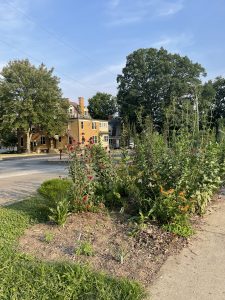
Lookin’ Spiffy, Weeding can be done in a Jiffy
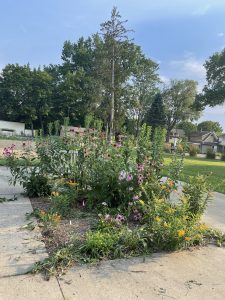
The Pine Patch after a thorough trim
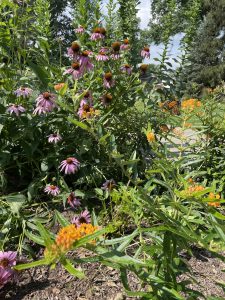
The only green we want to be seen!
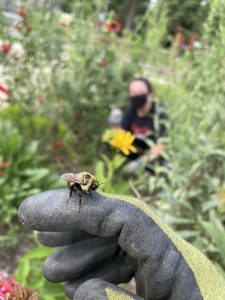
A bumblebee assisting Emily and I with the Pine Patch aisle way
Pan Trap Collection
Despite this past week’s pan trap collection not being bountiful, we were lucky to have great weather conditions. Clear and windless skies are always welcome on our sample days, so here is to hoping that we have a similar forecast during our next round of bee bowls in a couple weeks!
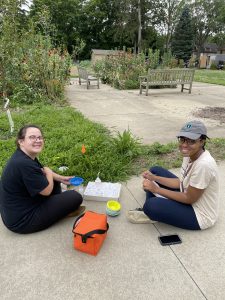
Emily, Woo ’24 and Uju, Woo ’22 hand-collecting samples for future pinning and iNaturalist updates
Practicing Pinning
The first time I tried pinning a bee, I was admittedly cautious. It took quite some time for me to get used to the steady-handed process because I didn’t enjoy the thought of accidentally dismembering a bug. Now, I am proud to say that I have pinned (and glued) a fair share. While my skills are not perfected by any means, learning this technique has challenged me in ways I did not expect. Maintaining the patience required to handle dead insects and then make them fit for presentation at first seemed like a daunting task. In hindsight, however, being able to engage directly in ecological-minded research has definitely been one of the highlights of my summer.
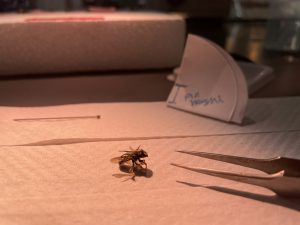
This specimen is ready for the runway after receiving their first blowout from the Bee Salon
Final Farewell Until Fall
It’s been an enjoyable experience getting to add more plants to this patch, and I’m eager to see how they end up fairing next to the year-old plants when I get back in August. Until then, see ya next semester, Pine Patch!
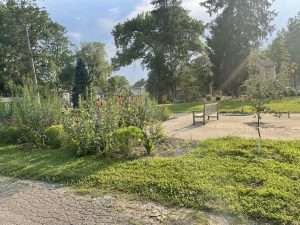
One last goodbye to the Pine Patch before I head home to Michigan
College Garden
Compost Curiosities
If you’ve taken a stroll past the College Garden lately, you might have noticed a few large squash vines taking root in the Compost Area. Over the past few weeks, the Garden has received visitors that choose to recycle their food scraps into our compost bins. While we are appreciative of a mindfulness to engage in green behaviors, we do ask that when you visit the garden to please refrain from leaving items (of any nature) behind. Eventually these plants will be removed and the compost will be arranged to be active once more, but until then we can guess at the possibilities of what they could be.
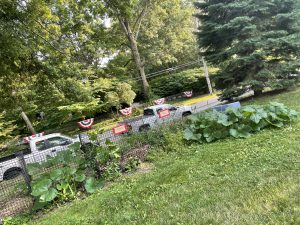
Several plants have been growing in the compost!
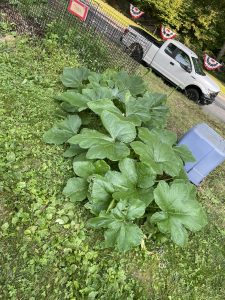
Pumpkins Perhaps?
Pretty Petals
A couple new plants started flowering at the College Garden this week! Displaying delicate white petals, the Mountain Mint brings a nice balance to the False Sunflowers that stand out amongst the crowd. Other blooms include the Ohio Spiderwort (featured in past posts) which has yet to close up shop for the summer, as well as various Ironweed and Butterfly Milkweeds that are dispersed throughout our 7-bedded plot.
Mountain Mint
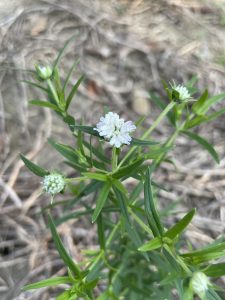
Pycanthemum muticum
False Sunflowers
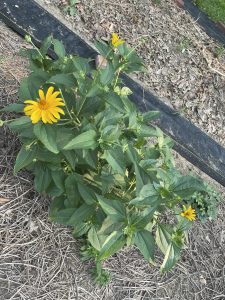
Heliopsis helianthoides
Past to Present
The College Garden and its plants have come a long way from where they started back in the beginning of May. Since progress is often difficult to track when observed from a day to day basis, I decided to include pictures of The College Garden from its past and present. Spaced a little over two months apart, the two images below show just how much can change in such a short period of time. Now, with the prospect of Wooster becoming a Xerxes Society Bee Certified Campus, my hopes for the future of this project are high. And although the time I spent working in The College garden was rewarding in its own right, I will be forever grateful for the opportunity I was given to grow alongside it.
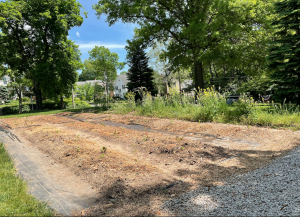
May 21st, 2021
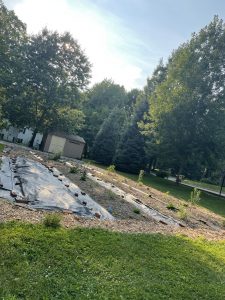
July 24, 2021
[Last but not least]
The Top Plot and Pollinator Pics of the Week
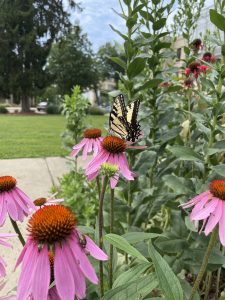
A Tiger Swallowtail Butterfly visiting a Purple Coneflower in the Pine Patch
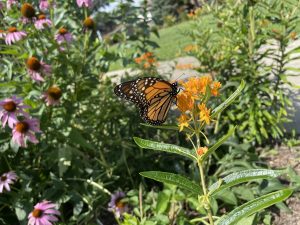
A Monarch Butterfly on the Butterfly Milkweed
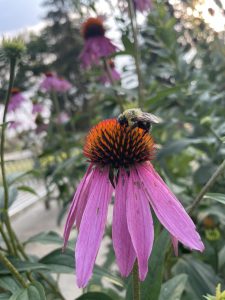
Buzzin’ About: Bumblebee on an Echinacea
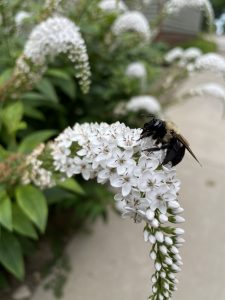
A furry friend on my way to the College Garden
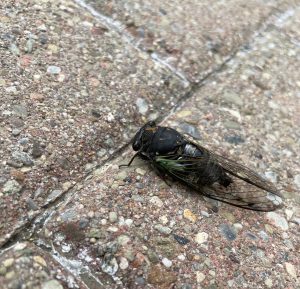
Salutations to the Cicadas!
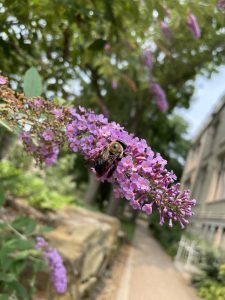
A Carpenter Bee(ing cute) next to Kauke
See(d) Y’all Next Semester!
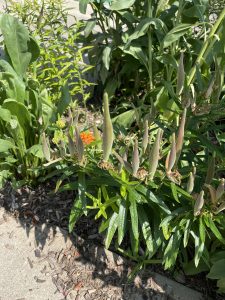
Butterfly Milkweed pods signaling that this plant is at the end of its flowering cycle
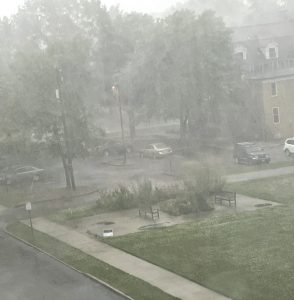
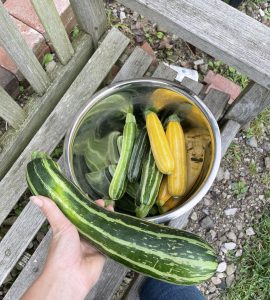
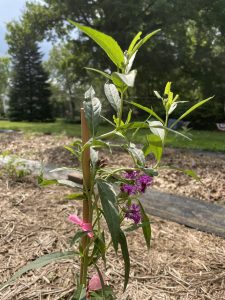
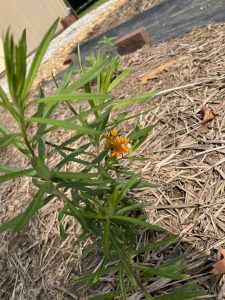
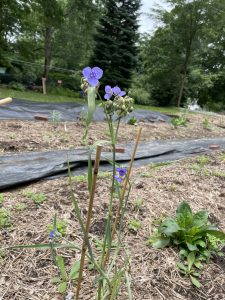
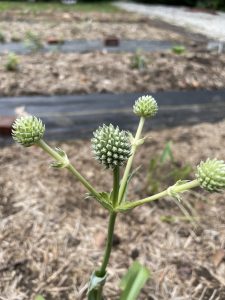
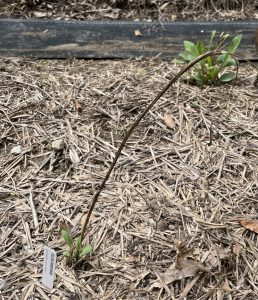
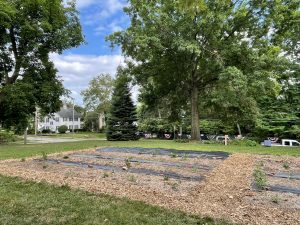
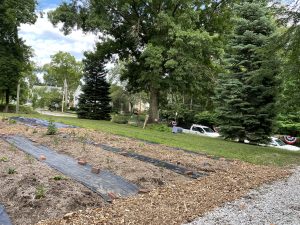
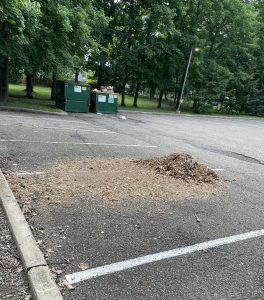
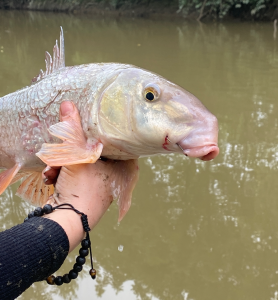
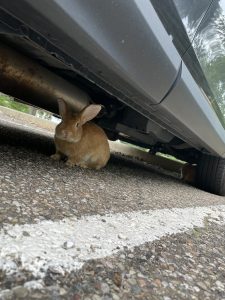
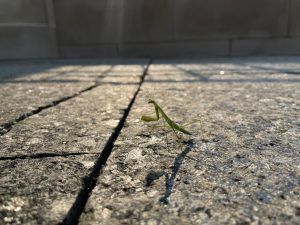
 Hello! I’m Emily, a sophomore intended biology major and environmental studies minor at the College of Wooster. I’ve always had a love for the outdoors and a fascination with insects. My childhood was spent climbing trees, walking in the creek, and looking for bugs. Though I have gone through phases of catching what my family calls “potato bugs” and “lightning bugs”, identifying the butterflies in my backyard, and researching ants and cicadas, my favorite insect has always been the hummingbird hawk-moth (look them up- they’re pretty odd looking). My work with the Pollinator Plots has helped to shape my education, provide work experience in the field, and allow me to share my passion with others. I hope you enjoy learning with me through this site and iNaturalist this summer!
Hello! I’m Emily, a sophomore intended biology major and environmental studies minor at the College of Wooster. I’ve always had a love for the outdoors and a fascination with insects. My childhood was spent climbing trees, walking in the creek, and looking for bugs. Though I have gone through phases of catching what my family calls “potato bugs” and “lightning bugs”, identifying the butterflies in my backyard, and researching ants and cicadas, my favorite insect has always been the hummingbird hawk-moth (look them up- they’re pretty odd looking). My work with the Pollinator Plots has helped to shape my education, provide work experience in the field, and allow me to share my passion with others. I hope you enjoy learning with me through this site and iNaturalist this summer!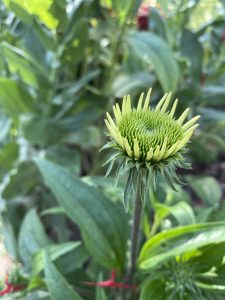
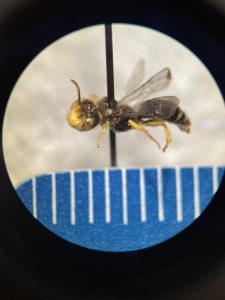
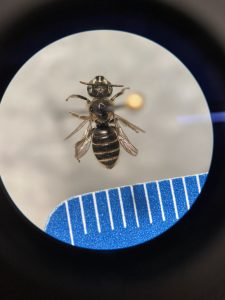
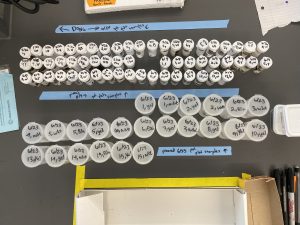
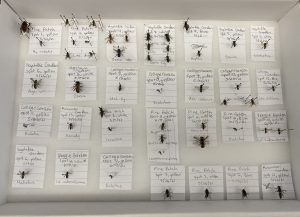
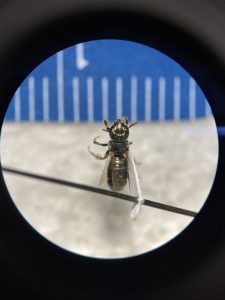
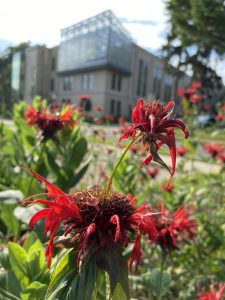
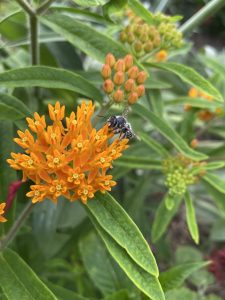
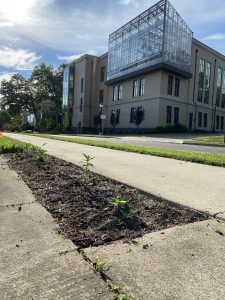
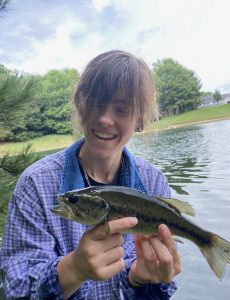
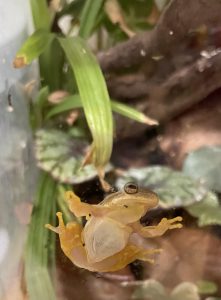
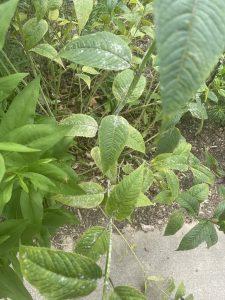
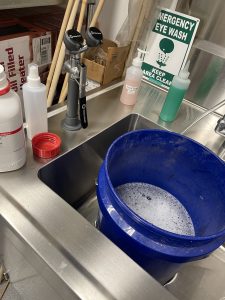 Materials Required:
Materials Required: